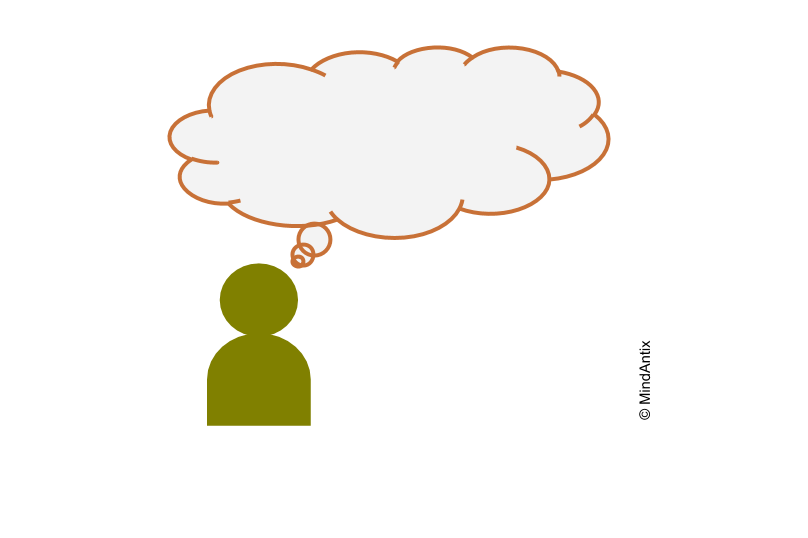“Once upon a time…” These four words have captivated audiences for centuries, signaling the start of a story. But what is it about stories that so powerfully captures our attention and leaves a lasting impression? The answer may lie in the way our brains learn and process information.
How Our Brains Learn: A Baby’s Perspective
A baby is constantly facing an influx of sensory information that its underdeveloped brain isn’t capable of handling. So how does it make sense of all that information? She relies on her adult caretakers to help her understand what is important and what is not. An example can clarify how this learning process works.
- Say you are going on a walk with your toddler and you see the neighbor’s cat.
- You excitedly point to the cat, in the high-pitched and exaggerated voice that only parents use, and go “Oh look, a kitty cat”
- The high-pitch sound stands out from all the other audio sounds the baby is hearing. At the same time, her body releases some chemicals like dopamine (to put her in alert state) and noradrenaline (to focus attention).
- You might then tell her how cute the cat looks and the cheery tone of your voice tells her that the cat is a “good” thing and not something to be afraid of. And simultaneously her body releases a bit of dopamine that signals relief.
Her brain then captures all of the information related to this event — including context like the neighborhood, the name, the image and the emotional state — and stores it as a “searchable rule”. The next time she walks by the neighbor’s house, her brain pulls up this knowledge about the cat, and she gets excited to pet the cat. Suppose, at another time you happen to be on a hike and see a different cat. Now, the knowledge that your toddler has about cats doesn’t match perfectly – it’s a different location and a different type of cat. Depending on other existing bits of information (e.g. knowledge about aggressive animals in the wild), her brain might pick a different rule and suggest a more cautionary approach.
The Story-Learning Connection
This learning process has striking similarities to how artificial intelligence (AI) is trained. Both require labeled data and multiple examples to generalize information. However, human brains have a unique ability to learn continuously by integrating discrete “units” of information into our existing knowledge base. Given what we now know about how our brains work, it seems likely that this unit of information corresponds to what lies between the cortisol and dopamine waves. The presence of this emotional signature tells the brain to take a snapshot of the moment and store it with additional metadata. This metadata, like the labels that we assign to this information (e.g. “cat”, “neighbor”, etc.), help in searching this database of knowledge at a later time.
This also helps explain why we find stories so compelling. Stories are packaged perfectly in the form our brain needs to process a learning unit. “Once upon a time…”, “…and they lived happily ever after” which map to the rise (and fall) of cortisol and dopamine provide the ideal bookends for this learning unit.
Our affinity for the narrative form explains a lot about learning and how we make meaning. Here are three ways stories play a role for us in society:
- Bedtime Stories: Bedtime stories, a tradition for many generations, are an ideal medium for communicating cultural values. Most folk tales don’t just tell a story but also explicitly call out a moral value, which is essentially a label for an abstract concept, at the end. When children hear different stories for the same moral they are able to build a deeper understanding of the moral concept and the different ways it can manifest.
- Pretend Play: When toddlers engage in pretend play they simulate novel scenarios with all the features of a story – setting, conflict, resolution. The simulation allows the child to vividly experience the emotions in the story and thereby learn from it. Engaging in pretend play with children is a great way for parents to recognize what learning their child is taking away from the situation and reframe it for them if needed.
- Conspiracy Theories: Unfortunately, our learning mechanism can also be hacked in unhealthy ways. The narrative structure also explains why conspiracies, even though untrue and easily verifiable, are so effective. Most conspiracies start with an outrageous claim to grab attention, label the story with a moral value and suggest an action to resolve the situation. When delivered by someone you trust, which is how we started learning in the first place, the conspiracy is easily accepted and integrated into our knowledge base.
Conclusion: The Enduring Power of Storytelling
Stories are not just a form of entertainment; they are fundamental to how we learn, make sense of the world, and connect with others. We are not certain why stories are so powerful, but one possible explanation is that the narrative structure is recognized by our brain as a unit of learning allowing it to be integrated well into existing knowledge structures. By understanding the science behind storytelling, we can harness its power for education, communication, and personal growth. So, the next time you hear “Once upon a time…,” remember that you’re not just embarking on a journey of imagination, but also engaging in a deeply ingrained learning process that has shaped humanity for millennia.


